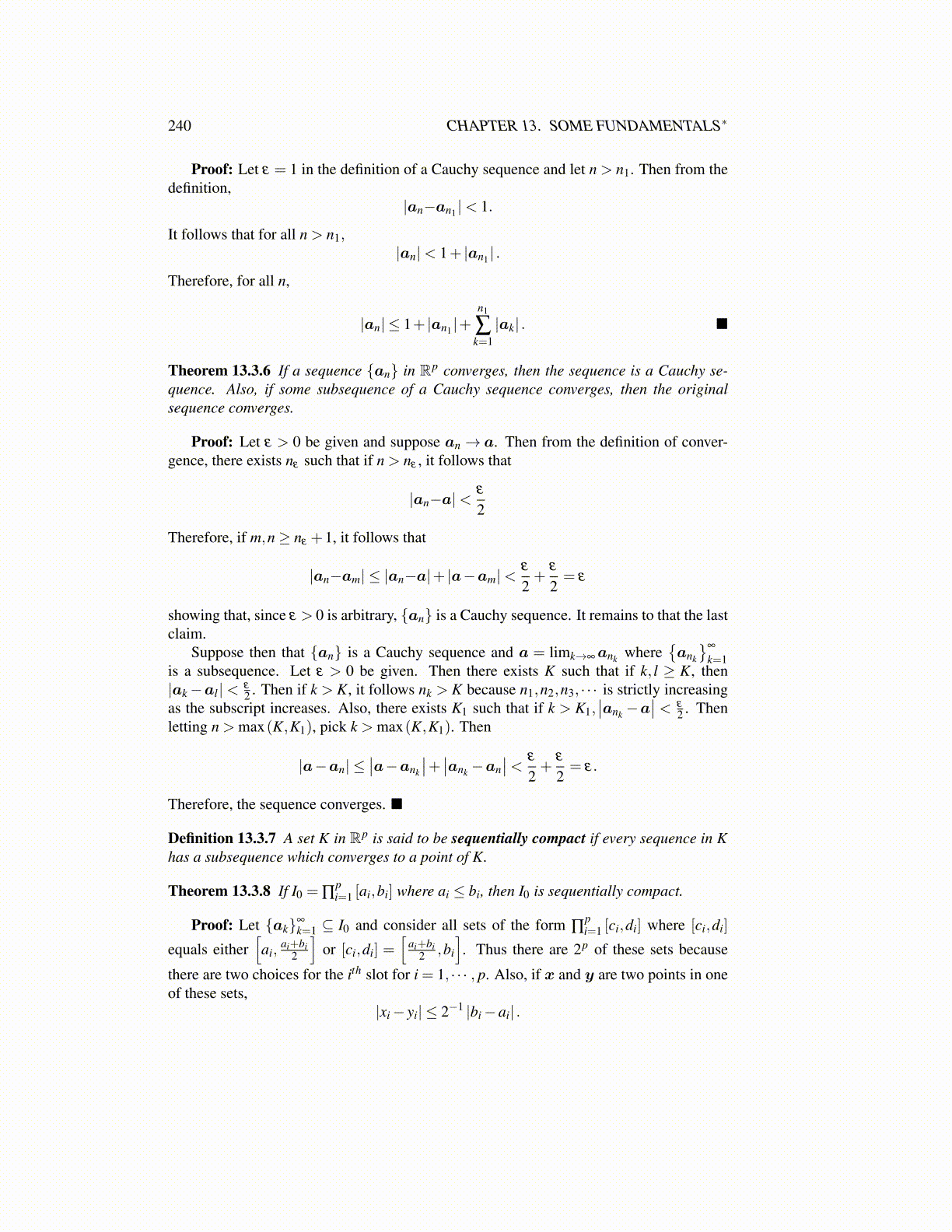
240 CHAPTER 13. SOME FUNDAMENTALS∗
Proof: Let ε = 1 in the definition of a Cauchy sequence and let n > n1. Then from thedefinition,
|an−an1 |< 1.
It follows that for all n > n1,|an|< 1+ |an1 | .
Therefore, for all n,
|an| ≤ 1+ |an1 |+n1
∑k=1|ak| . ■
Theorem 13.3.6 If a sequence {an} in Rp converges, then the sequence is a Cauchy se-quence. Also, if some subsequence of a Cauchy sequence converges, then the originalsequence converges.
Proof: Let ε > 0 be given and suppose an → a. Then from the definition of conver-gence, there exists nε such that if n > nε , it follows that
|an−a|<ε
2
Therefore, if m,n≥ nε +1, it follows that
|an−am| ≤ |an−a|+ |a−am|<ε
2+
ε
2= ε
showing that, since ε > 0 is arbitrary, {an} is a Cauchy sequence. It remains to that the lastclaim.
Suppose then that {an} is a Cauchy sequence and a = limk→∞ank where{ank
}∞
k=1is a subsequence. Let ε > 0 be given. Then there exists K such that if k, l ≥ K, then|ak−al |< ε
2 . Then if k > K, it follows nk > K because n1,n2,n3, · · · is strictly increasingas the subscript increases. Also, there exists K1 such that if k > K1,
∣∣ank −a∣∣ < ε
2 . Thenletting n > max(K,K1), pick k > max(K,K1). Then
|a−an| ≤∣∣a−ank
∣∣+ ∣∣ank −an∣∣< ε
2+
ε
2= ε.
Therefore, the sequence converges. ■
Definition 13.3.7 A set K in Rp is said to be sequentially compact if every sequence in Khas a subsequence which converges to a point of K.
Theorem 13.3.8 If I0 = ∏pi=1 [ai,bi] where ai ≤ bi, then I0 is sequentially compact.
Proof: Let {ak}∞
k=1 ⊆ I0 and consider all sets of the form ∏pi=1 [ci,di] where [ci,di]
equals either[ai,
ai+bi2
]or [ci,di] =
[ai+bi
2 ,bi
]. Thus there are 2p of these sets because
there are two choices for the ith slot for i = 1, · · · , p. Also, if x and y are two points in oneof these sets,
|xi− yi| ≤ 2−1 |bi−ai| .